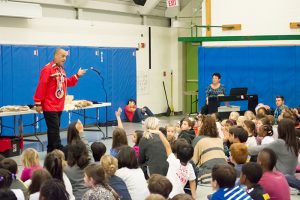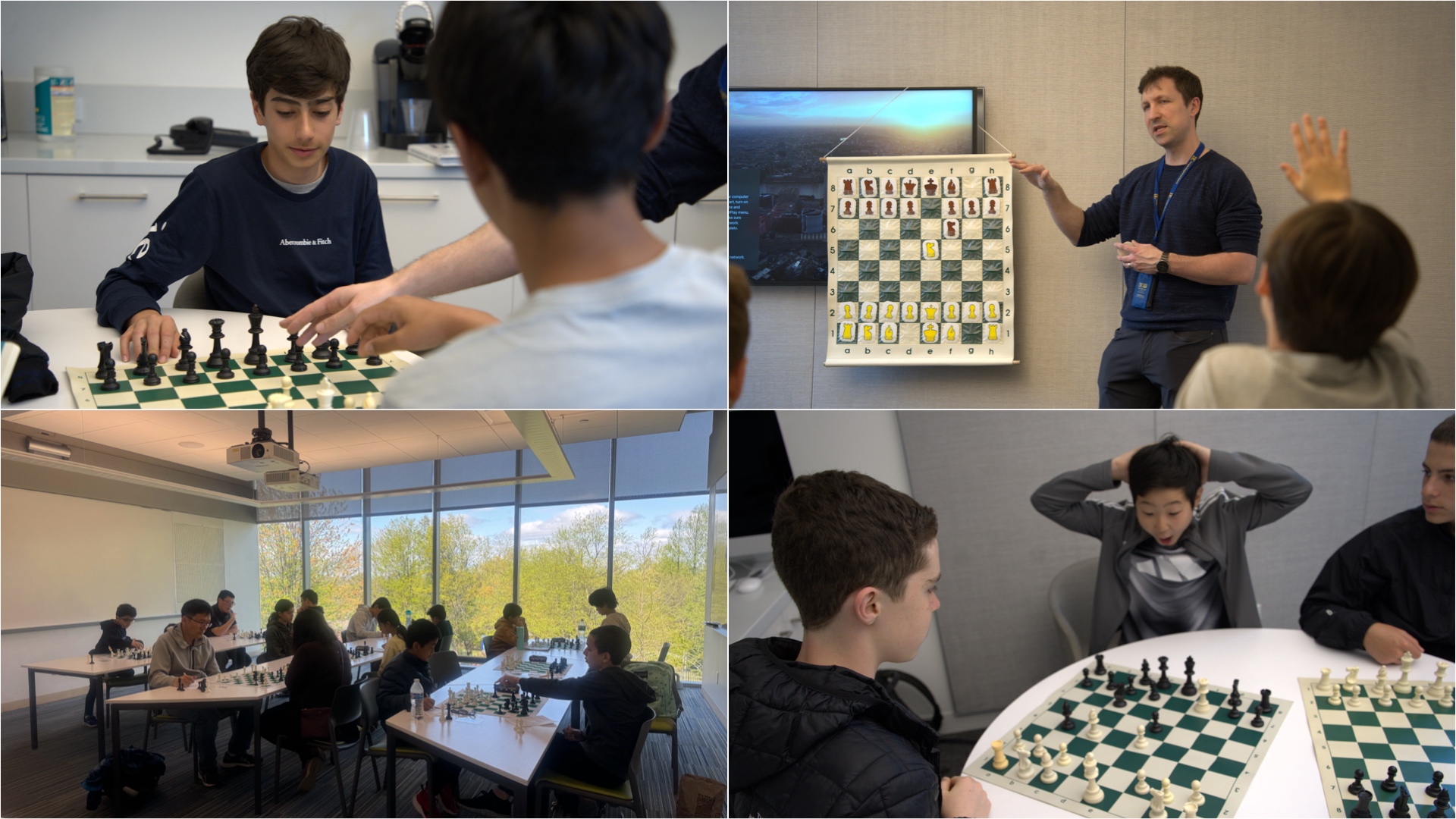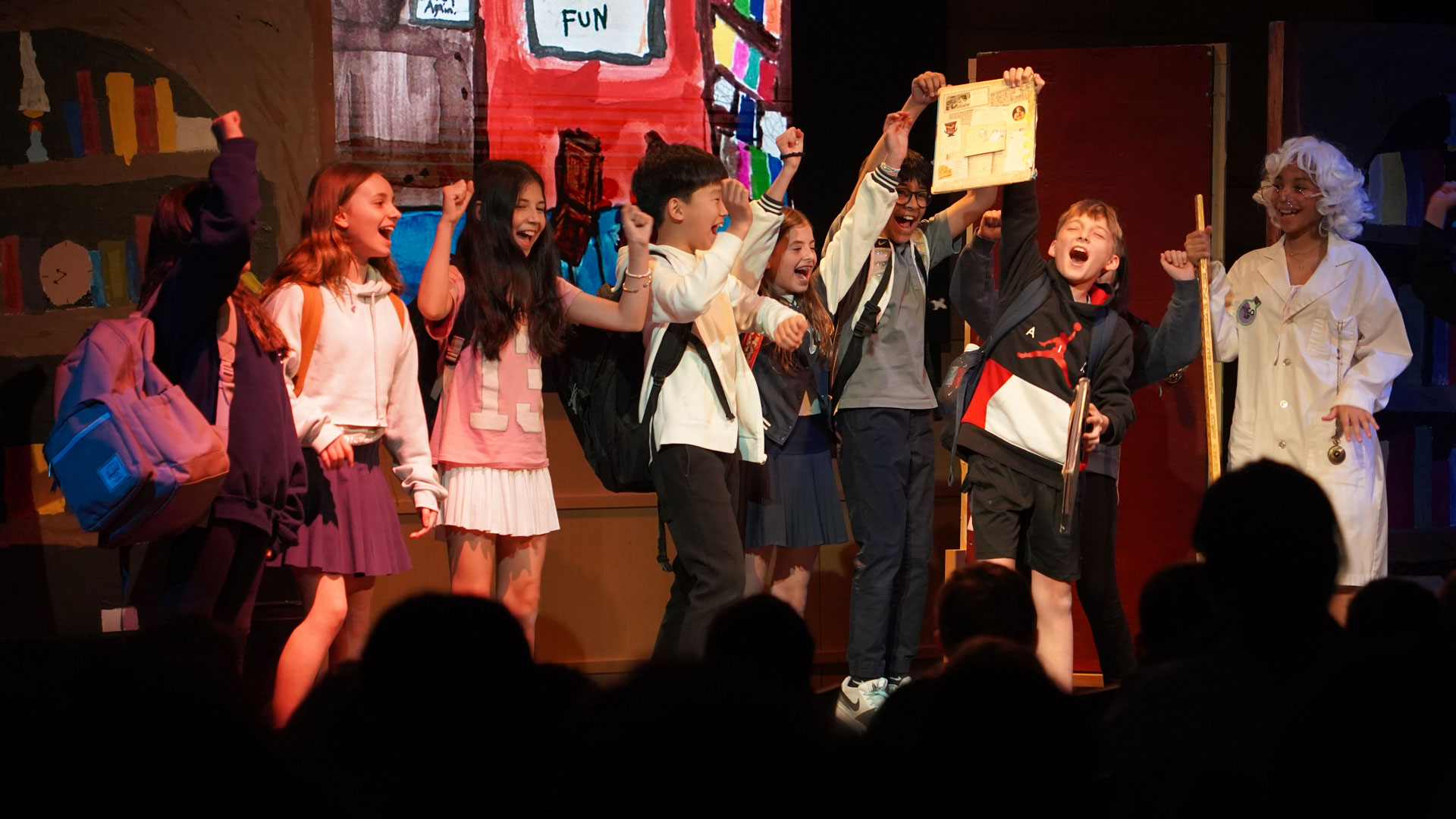The Lower School’s Hudson River Project for second, third, and fourth graders is an exciting place-based approach to learning developed by science teacher Elizabeth “Beth” Lemire. It is also an interdisciplinary curriculum that uses Native American storytelling and storytelling through music to cultivate students’ sense of identity and relationship with nature.
…they will be both skill-ready and heart-ready to be stewards of the earth.
“The purpose of this study is not only to gain scientific information about the Hudson River but also to allow students to experience the beauty and majesty of the river—to deepen their ecological consciousness,” says Lemire. “It is hoped that this personal experience will eventually translate into adults with a profound understanding and connection to the river and the environment. That they will be both skill-ready and heart-ready to be stewards of the earth.”
Descriptive and figurative language—rather than scientific language—starts the children on their journey of exploration. Children are initially given an assessment questionnaire about the Hudson River. Lemire tallies the words that reoccur in their answers, words such as “disgusting,” “junky,” “polluted,” and “gross.” Lemire contrasts these words with those used in Native American cultures, where the river is described as having living qualities and a spirit. Looking at those negative reoccurring words, the children ponder, “What would it be called if we spoke like this about a person?” Says Lemire, “After much discussion, they agree this would be bullying. This perspective hits them hard because they all know how bad bullying is, and that it is unacceptable. From there the children craft a script telling how the river is bullied until someone takes a stand on behalf of the river, and they begin to change their perceptions of the Hudson River.”
This exercise leads students into the more formal study of the river’s physical features, history, plants, animals, people, and structures. Students learn specific vocabulary pertaining to the river, and their scienti c study is enhanced by listening to “The Moldau,” a symphonic poem by Czech composer Bedřich Smetana that evokes the sounds of a river from its source to its mouth, and by singing songs by Pete Seeger and others about the Hudson River.

The representative of a local Lenape tribe come to visit Lower School every year.
Throughout the learning process, students represent what they’ve learned in many ways, including making card games that use facts about the Hudson and creating electronic games that mimic the iconic “Operation” game, where the object is to clean the river. Says Lemire, “In their journals they write about their journey as they discover the deep connection they have with the Hudson. Our culminating event is a sail on the Clearwater sloop where they interact with on-board educators who enhance their understanding even further. We sail from a point further north, Cold Spring, NY, so that the children touch on what it might have been like before the cities were built. Sailing on the Clearwater is always a special event, one that will hopefully lock in a sense of pride and love for the Hudson River.”
The Hudson River Project demonstrates that strong connections can be made between science and the human experience through storytelling. “Storytelling conveys important ideas to children in an inspiring way,” says Lemire.
“When children begin thinking of how to tell a story about the Hudson River as a ‘spirit’ being ‘bullied,’ this gives rise to emotion and touches their hearts. They began to think more deeply about how they speak about the river, yes, but even more importantly about how they treat each other.”
This, in turn, has ramifications for how these students grow up to live D-E’s Mission of making the world a better place. To put it another way, Lemire invokes the words of Miki Kashtan, the co-founder of the Bay Area Nonviolent Communication and the North America Leadership Program: “When we cultivate care and empathy, not only does our emotional health improve, but also our vision, hope for the future, and the capacity, both individually and collectively, to act as moral agents in addressing the enormous challenges facing us today.”





